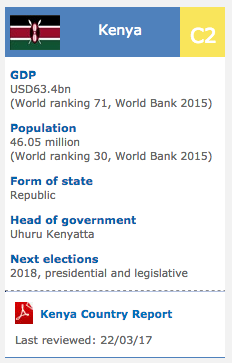Mongolia: Mongolia Art / Culture Profile 2012
2012/03/20
Mongolia Art / Culture Profile 2012
Mongolian Culture has been heavily influenced by the Mongol nomadic way of life. Other important influences are from Tibet and Tibetan Buddhism, and from China. In the 20th century, Russian and, via Russia, European culture have had a strong effect on Mongolia. Not only Genghis Khan but also the nomadic peoples have had an influence on Mongolian fine arts.
Traditional values
Among the topics that are mentioned from the oldest works of Mongolian literature to modern soft pop songs are love for the parents and homesickness, a longing for the place where one grew up. Horses have always played an important role in daily life as well as in the arts. Hospitality is so important in the steppes that it is traditionally taken for granted. Mongolians have an affinity for heroes, and the Mongolian word for hero, baatar, appears frequently in personal names, and even in the name of Mongolia's capital, Ulaanbaatar.
Ger
Ger is the Mongolian word for yurt, and yurts are part of the Mongolian national identity. The Secret History of the Mongols mentions Genghis Khan as the leader of all peoples who live in felt tents, and even today a large share of Mongolia's population lives in yurts, even in Ulaan Bator. In Mongolian, ger also means home, and a number of other words are derived from this word stem. For example, gerlekh means to marry.
Religion
In the 17th century, Tibetan Buddhism, or lamaism, became the dominant religion in Mongolia. Traditional Shamanism was, except in some remote regions, suppressed and marginalized. On the other hand, a number of shamanic practices, like ovoo worshipping, were incorporated into lamaist liturgy. Lamaism has often been accused of low morality and held responsible for being the main cause for Mongolia's backwardness by outside observers in the late 19th/ early 20th century, on the other hand the role of the Buddhist church was generally unquestioned by the Mongolian population.
Tibetan Buddhism is a ritualistic religion with a large number of gods and goddesses. This inspired the creation of religious objects including images in painting and sculptures.
After the stalinist purges in the 1930s, both Tibetan buddhism and shamanism were virtually outlawed in the Mongolian People's Republic. In Inner Mongolia, traditional religion was heavily affected by the Cultural Revolution. Since the 1990s, a number of Christian sects are trying to gain a foothold in Mongolia. There are also about 4% Muslim Mongolians.
Customs and Superstitions
Mongolians traditionally were afraid of misfortunes and believe in a variety of good and bad omens. Misfortune might be attracted by talking about negative things, or by persons that are often talked about. They might also be sent by some malicous shaman or enraged by breaking some taboo, like stepping on a yurt's threshold, desecrating waters or mountains, etc.[citation needed] The most endangered family members were children, and that's why they would sometimes be given non-names like Nergui (Mongolian: without name) or Enebish (Mongolian: not this one), or boys would be dressed up as girls. Before going out at night, young children's foreheads are sometimes painted with charcoal or soot in order to deceive evil spirits that this is not a child but a rabbit with black hair on the forehead.
When passing ovoos on a journey, they are often circumvented, and some sweets or the like are sacrificed, in order to have a further safe trip. Certain ovoos, especially those on high mountains, are also sacrificed to in order to obtain good weather, ward off misfortune and the like.
For a child, the first big celebration is the first haircut, usually at an age between three and five.[5] Birthdays were not celebrated in the old times, but these days, birthday parties are popular. Wedding ceremonies traditionally include the hand-over of a new ger to the marrying couple. Deceased relatives were usually put to rest in the open, where the corpses would be eaten by animals and birds. Nowadays, corpses are usually buried.
Festivities
The most important public festivals are the Naadams (Mongolian: games). The biggest one is held each year on July 11th-13th in Ulaanbaatar, but there are also smaller ones on aimag and sum levels. A naadam involves horse races, wrestling, and archery competitions.
For families, the most important festival is Tsagaan Sar (Mongolian: white month or white moon), which is roughly equivalent to Chinese New Year and usually falls into January or February. Family members and friends visit each other, exchange presents - very popular presents for all opportunities are khadags - and eat huge quantities of buuz.
Literature
The oldest completely passed down work of Mongolian literature is probably also the most well-known abroad: The Secret History of the Mongols. It does, however, contain passages of older poetry. Otherwise, few examples of Mongolian literature from the time of the Mongol empire have come down in written form: fragments of a song about the mother and the area where one grew up were found in a soldier's grave at the Volga river in 1930, 25 manuscript and block print fragments were found in Turfan in 1902/03, Pyotr Kozlov brought some fragments from Khara-Khoto in 1909.
Other pieces of literature have long been orally traded and typically consist of alliterative verses. They include the proverbs attributed to Genghis Khan, and the epics around the Khan's life, or the one about his two white horses. Other well-known epics deal with Geser Khan. Famous Oirad epics are Jangar, History of the four Oirad's Victory over the Mongols, Khan Kharangui, Bum Erdene, etc.
Beginning from the 17th century, a number of chronicles have been preserved. They also contain long alliterative passages. Notable examples are the Altan Tovch by Luvsandanzan and another anonymous work of the same title, Sagang Sechen's Erdeniin Tovch, Lomi's History of the Borjigin clan (Mongol Borjigin ovgiin tüükh), and many more.
Already at the time of the Mongol empire, samples of Buddhist and Indian literature became known in Mongolia. Another wave of translations of Indian/Tibetan texts came with Mongolia's conversion to Tibetan Buddhism in the late 16th/ early 17th centuries. Beginning in the 1650s, copies of religious texts like the Kanjur and Tanjur and also of epics like Geser Khan began to be appear as block prints. These prints were mainly produced in Beijing, but also in some Mongolian monasteries.
In Mongolia's time under the Qing dynasty, a number of Chinese novels were translated into Mongolian. At the same time, social discontent and an awakening Mongol nationalism lead to the creation of critical works like Injanash's historical novel Blue Chronicle or the stories about "Crazy" Shagdar.
Beginning with the works of Tseveen Jamsrano and other Buryats in the 1910s, many important works of Russian and European literature, or at least those that were not politically incorrect, were translated into Mongolian in the 20th century.[citation needed]
Religious theatre plays about the Tibetan hermit Milarepa were already performed in the 18th and 19th centuries. The oldest Mongolian drama known today, "Moon cuckoo" (Saran khökhöö) was created by Danzanravjaa around 1831. The play got lost in the early 20th century[8], but in the meantime other theatre groups had developed. The first professional Mongolian theatre was founded in Ulaanbaatar in 1930. In the socialist period, every aimag got its own theatre. Since the 1990s, a number of small privately owned theatre companies, like Mask or Shine üe prodakshn have been founded. They heavily focus on light comedies and skits, and also regularly produce clips that are distributed on DVD or the internet.
Music
Mongolia has a very old musical tradition. Key traditional elements are throat-singing, the Morin Khuur (horse head fiddle) and other string instruments, and several types of songs. Mongolian melodies are typically characterized by pentatonic harmonies and long end notes.
In the 20th century, western style classical music has been introduced, and mixed with traditional elements by some composers. Later on the full palette of Pop and Rock music has also been adopted by younger musicians.
Cinema
In socialist times, movies were treated as a propaganda instrument by the Mongolian People's Revolutionary Party. The first topics were popular legends and revolutionary heroes like in Sükhbaatar. In the 1950s, the focus shifted to working class heroes, as in New Year. The 1970s saw many documentaries and everyday life stories as in The Clear Tamir.
After democratisation, filmmakers turned to international partners for support, as in the Japanese-Mongolian co-production Genghis Khan. Independent directors like Dorjkhandyn Turmunkh, and Byambasuren Davaa created movies that connected ancient traditions and mythology, and how they may relate to life in a modern world. Byambasuren's The Story of the Weeping Camel was nominated for an Academy Award as foreign documentary in 2005.
Cuisine
The Mongolian cuisine is primarily based on meat and dairy products, with some regional variations. The most common meat is mutton, supplemented in the desert south by camel meat, in the northern mountains by beef (including yak). Dairy products are made from mare's milk (Airag), from cattle, yaks, and camels (eg. clotted cream). Popular dishes include buuz (a type of meat dumpling), khuushuur (a meat pastry), khorkhog (a meat stew, usually a special meal for guests), and boortsog (a sweet biscuit). The meal commonly known as Mongolian barbecue is not Mongolian at all, but Taiwanese in origin.
Starting in the second half of the 20 century, vegetables are increasingly becoming a part of the Mongol diet as well. In the capital city of Ulaanbaatar, there is a wide range of imported food available.
- Mongolia News
-
- MONGOLIA: Battulga will receive the seal from outgoing President Tsakhiagiin Elbegdorj.
- MONGOLIA: Mongolia’s mighty military diplomacy
- CHINA: Saving face on the Korean Peninsula
- AFGHANISTAN: Higher earning Why a university degree is worth more in some countries than others
- CHINA: Asian Markets Retreat After Oil Prices Fall Again
- AFGHANISTAN: Global growth will be disappointing in 2016: IMF's Lagarde
- Trending Articles
-
- BOTSWANA: Bill Gates sees US likely to maintain aid levels for Africa
- NIGERIA: The city that won't stop growing, Lagos
- ITALY: Italy seizes NGO rescue boat for allegedly aiding illegal migration
- PAKISTAN: Qatar launches new direct sea route to Pakistan
- EUROPEAN UNION: UK seeks to 'align' with EU on data protection rules
- ANGOLA: W. Africa Crude-Angolan programme emerges














